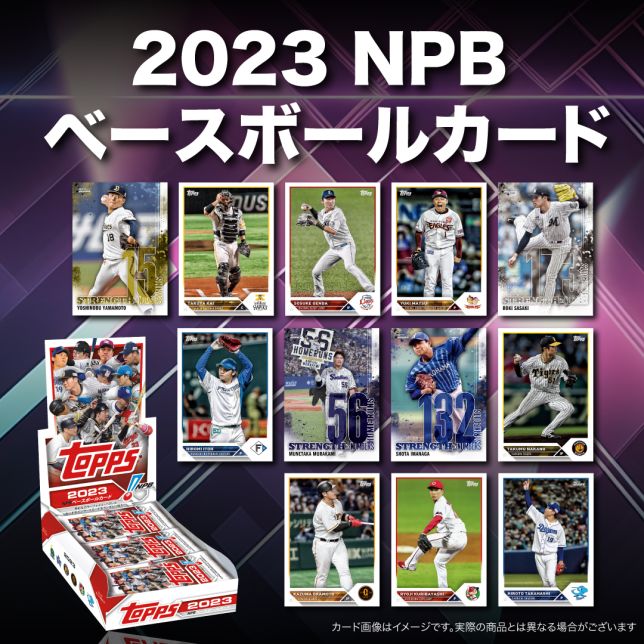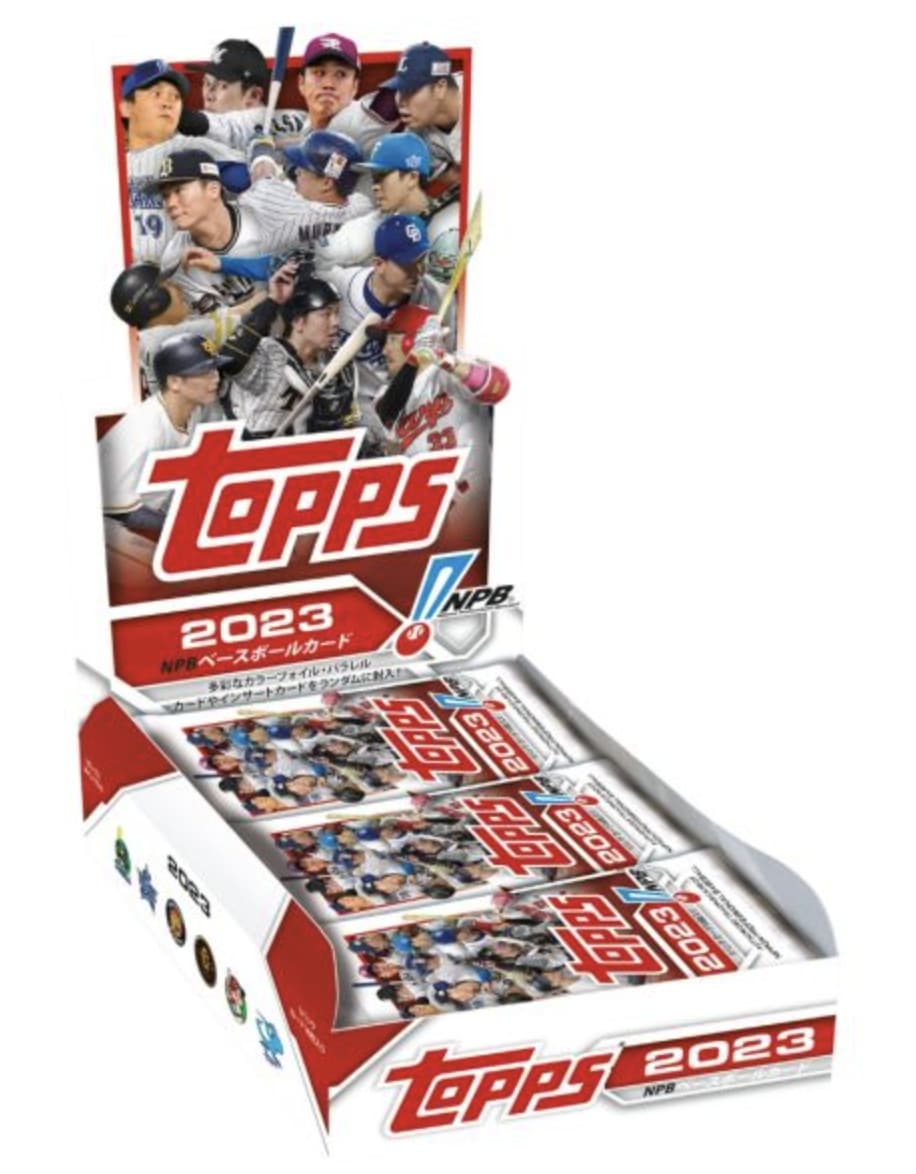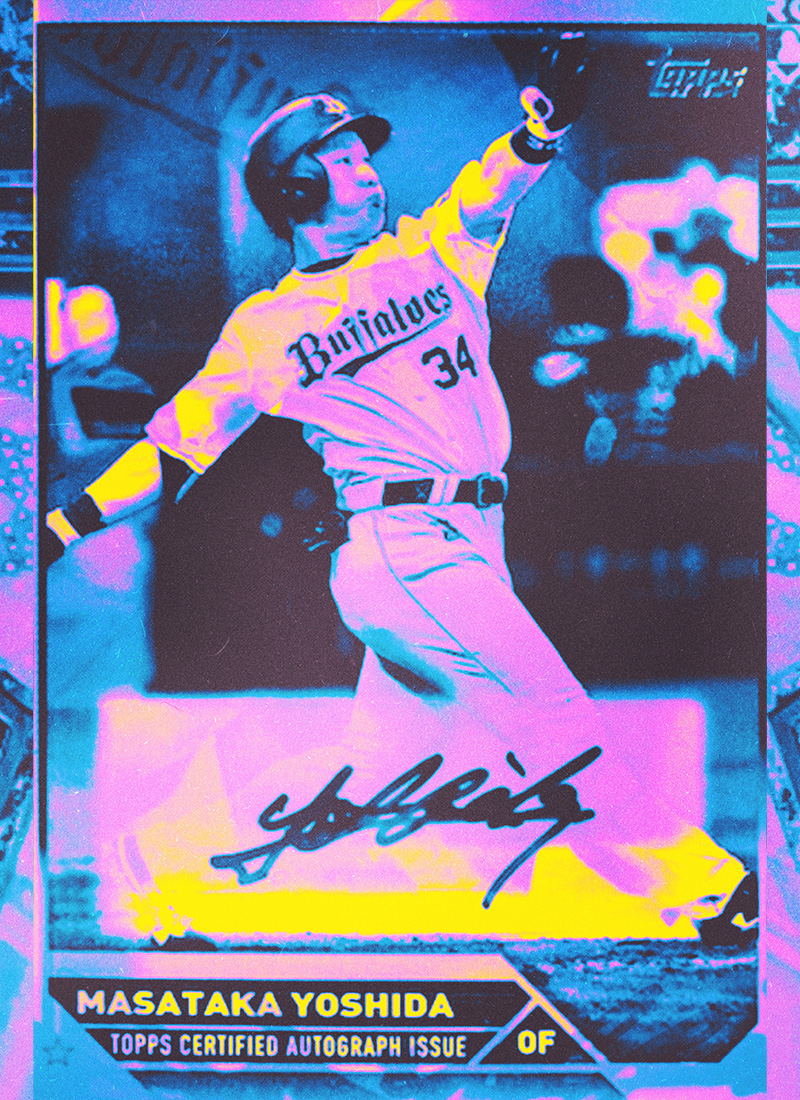
Sports and Collecting in Japan
To celebrate the release of the 2025 Topps Baseball Series 1 MLB World Tour: Tokyo Series Exclusive, we wanted to highlight this RIPPED classic feature from 2023. Dive in and discover (or rediscover) the history of Baseball cards in Japan.
According to legend, Abner Doubleday is the father of baseball (although this has been debunked – shout out to Doc Adams). He was said to have invented the sport in 1839 while attending West Point as a cadet. Some 184 years later, baseball continues to be referred to as the national pastime of the United States.
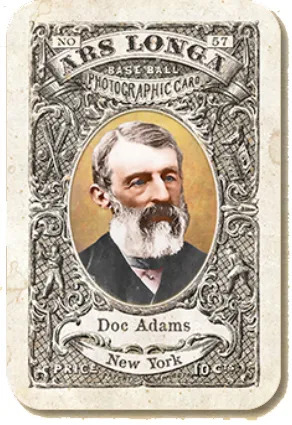
Ars Longa #57 Doc Adams
However, in terms of popularity at the professional level, the Nippon Professional Baseball League (NPB) in Japan, not North America’s MLB, currently holds the title for the most rabid fanbase. The MLB has never been played at a higher level than right now, and yet, to many, it feels like a relic of the US’s 19th-century roots while other sports, such as basketball and football, continue to rise worldwide. And while the USA’s obsession with reaffirming national history will continue to give the sport life during the dog days of summer, the sport’s history in Japan is nearly as long and certainly as romantic.
Origins of Baseball in Japan
Baseball debuted in Japan in 1872 – 33 years after the Doubleday legend, and four years before the establishment of MLB’s National League – when an American Professor, Horace Wilson, taught the sport to his students at Kasei Academy in Tokyo. Baseball in Japan went viral, capturing the attention of a new audience. Fast forward 62 years to 1934, when a team of American League MLB legends, including Babe Ruth, Lou Gehrig, Charlie Gehringer, and Jimmie Foxx, were brought to Japan by Matsutarō Shōriki, to tour Japan and play against a team of Japanese All-Stars curated by Matsutarō.
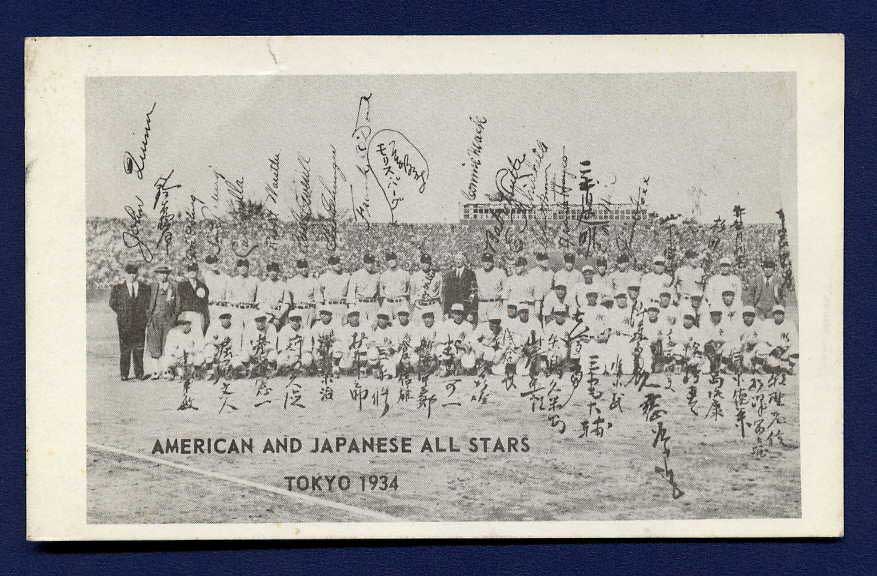
📸 VintageBall | Postcard from 1934 All-Star Tour of Japan
After the tour, the Japanese All-Star team remained together, becoming the Great Japan Tokyo Baseball Club. Then, in 1936, the NPB’s predecessor was founded. It comprised seven teams, including the original Great Japan Tokyo Baseball Club, which still competes today in the NPB’s central division under the moniker the Yomiuri Giants.
But for baseball, it wasn’t “happily ever after” as just four years after the creation of the NPB, Japan entered World War II. Like the MLB, the league soldiered on and helped keep morale up during the global conflict. As the war continued ramping up and the military needed more manpower, the NPB began playing shortened seasons of around 80 games between 1940 and 1943. That number was reduced even further in 1944 to 35 games, and the season was fully canceled in 1945 partially because nearly all of Japan’s professional players were serving in the military, but also to roiling anti-American sentiment in the country.
After the war, a devastated Japan, now occupied by the United States military, began to rebuild in every sense of the word – physically, emotionally, and spiritually. At the suggestion of General Douglas MacArthur, the game of baseball was reintroduced as a way to help uplift a country ravaged by war. In 1950, modern professional baseball in Japan was born with the official creation of the NPB league. By 1952, the US military occupation of Japan had ended, and the stage was set for the sport to become what it is today, globally considered second only to the MLB, with the talent gap closing more and more every year.
NPB Players in the MLB
Of course, in today’s game, the most all-around talented player is an NPB export, Shohei Ohtani, the three-time MVP, World Series winner, and only member of the 50/50 club. But, Japan’s first player to break into the MLB was a pitcher named Masanori Murakami, who played 54 games for the San Francisco Giants between 1964 and 1965 MLB season before returning to his NPB squad, the Nankai Hawks, due to contract disputes surrounding the loan agreement between the NPB and MLB club.
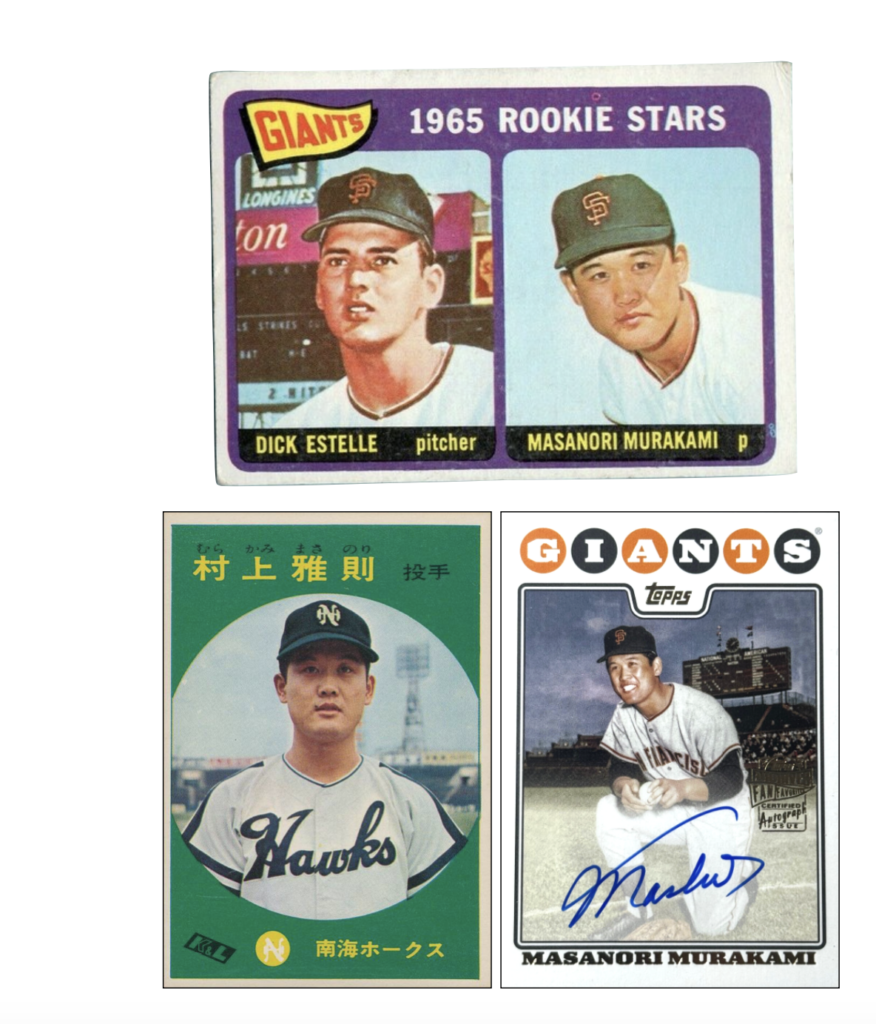
Clockwise from top: 1965 Topps Giants Rookes #282; 2023 Topps Archives Fan Favorites Auto Masanori Murakami ; 1967 Kabaya-Lear Masanori Murakami #302
Of course, while there were a handful of NPB veterans to make their way to the MLB after Murakami’s debut, at the dawn of the new millennium, it was a slap-hitting kid with a bit of power named Ichiro who opened up the floodgates for NPB players when he won AL Rookie of the Year and AL MVP during his inaugural MLB campaign in 2001.

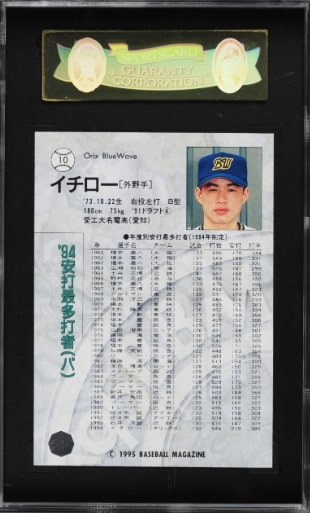
1992 BBM #10 Ichiro Suzuki Rookie. Check out PWCC for more Ichiro cards.
Baseball Cards, the NPB, and Japanese Players
Much like baseball in the United States, collectible cardboard has been a part of the sport’s culture since its early days in Japan. In the early 1900s, generic baseball players began appearing on round pieces of cardboard known as Menko cards, which, in terms of style and design, look a lot like the POGS that captured the attention of playgrounds across the US in the 1990s.
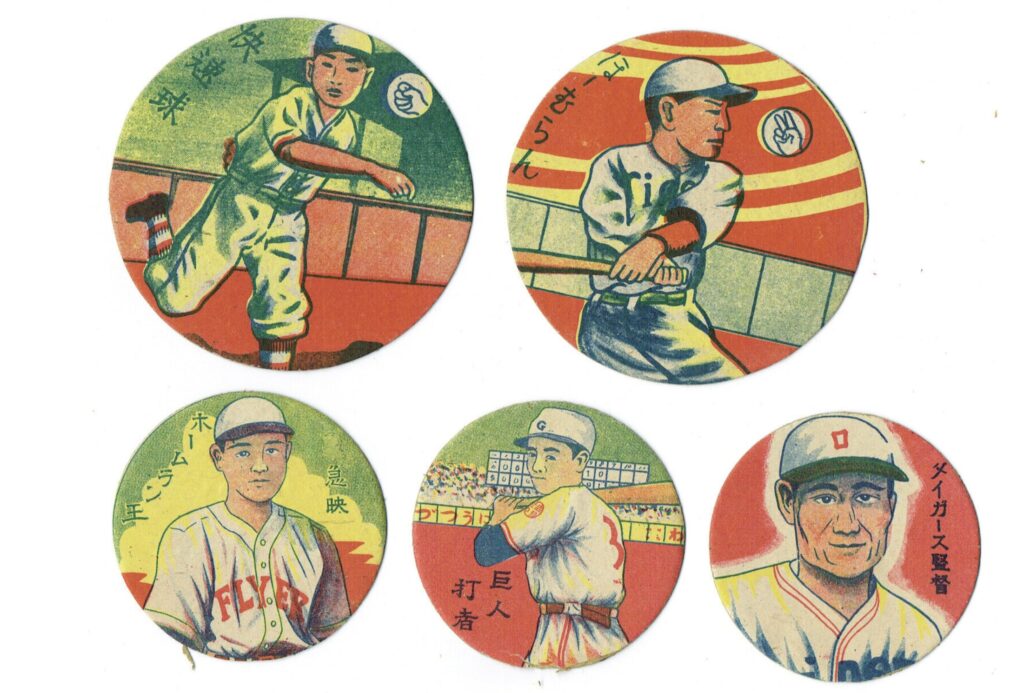
Japanese Baseball Menko Cards
The next iteration of collectible baseball cards captured real Japanese baseball players from touring and college teams from the 1900s to the 1920s; these came in the form of postcards. While some other photograph-type cards were produced leading up to 1937, when Japan invaded China and World War II began in Asia, the production of baseball cards in Japan ceased to continue as the luxury goods were not essential to the country’s war efforts.
In Japan, the traditional baseball cards that we think of in the Hobby started to come about during the post-war years of US military occupation. Collectible cardboard started appearing in packs of gum and candy, followed shortly after by the cards with the size and orientation of an early tobacco card. Much like the Hobby that we’ve known since we got hooked, the popularity of the Hobby in Japan went through booms and busts during the first half of the 20th century. In 1967, Kabay-Leaf released the first set of cards that resembled modern American trading cards. The set consisted of 105 cards, featured only six of the twelve professional Japanese teams, and was the only set ever produced by the company. Still, it laid the foundation for the modern baseball card hobby for Japanese baseball.
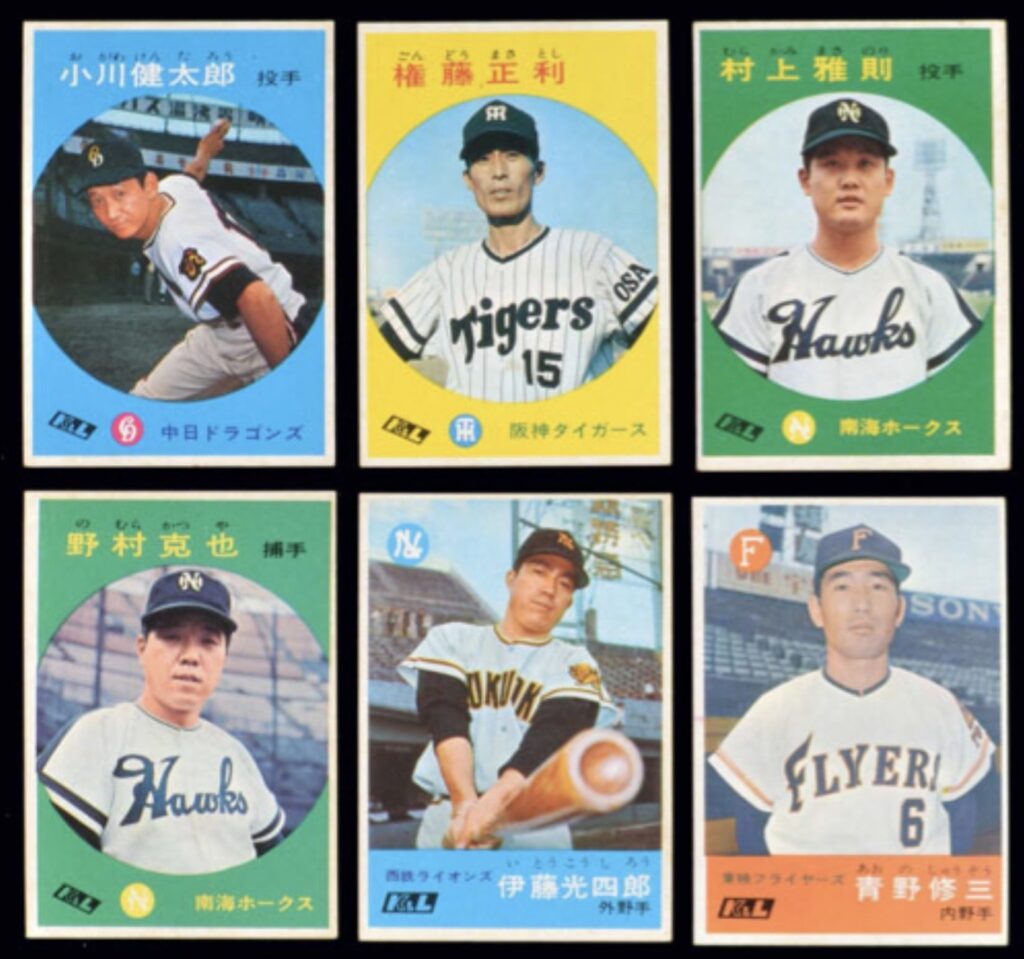
1967 Kabay-Leaf Baseball Cards
In the 1970s, a potato chip company, Calbee, began producing one set of Japanese baseball cards yearly, and that tradition continues today. But, in terms of Japanese baseball card producers, none ever achieved the popularity of BBM, which began their baseball card endeavor in 1991, printing cards for some of the NPB’s most famous expats, including Ichiro, Hideki Matsui, and Hideo Nomo. BBM has even produced cards for some MLBers who spent time in Japan, such as acclaimed Detroit Tigers Cecil Fielder and “big fella” Rod Allen, who truly got down with his bad self during his time with the Hiroshima Toyo Carp.
Topps and NPB Baseball Cards
It wasn’t until well after we were all bit by the Y2K bug and internet inventor Al Gore lost his presidential bid that Topps got involved in the Japanese baseball card game. In 2002, the quintessential American baseball card company teamed up with Japanese company Kanebo to make an MLB card set with the backs of the cards printed in Japanese.
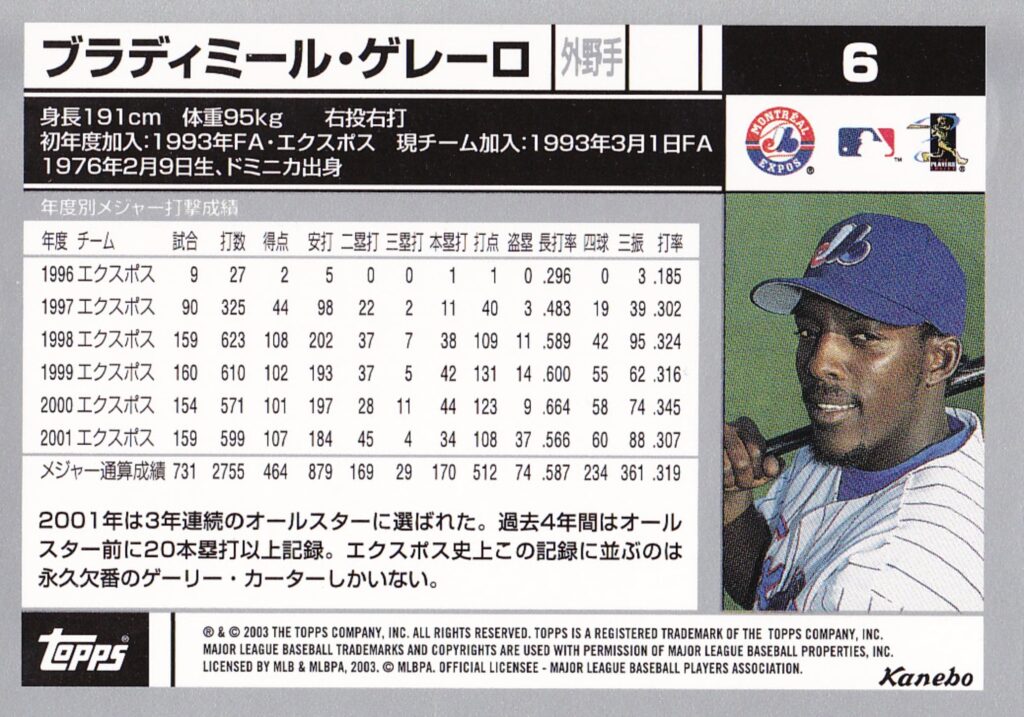
2002 Topps Kanebo #6 Vladimir Guerrero
Nearly 20 years later, in 2021, Topps debuted its first-ever NPB set that included Roki Saski and Seiya Suzuki as the main cards to chase in the 216-card base set, which features over a half-dozen limited numbered color parallels ranging in print runs from 150 down to the 1/1 RayFoil. 2023 saw the third straight year for the NPB set, which is still in its infancy. And while the base set still boasts 216 cards (this time with eight numbered parallels), for the first time, you can chase after an autograph: 2023 Boston Red Sox rookie Masataka Yoshida‘s signature can be found in the set featuring a photo of him posed for takeoff in his Orix Buffaloes uniform.
After almost 90 years of professional baseball in Japan, Babe Ruth helping to spread the sport in the country, and the sport surviving one of the most traumatic conflicts in history, the modern trading card hobby has finally entered the chat, and Topps is just beginning to scratch the surface of its potential.
